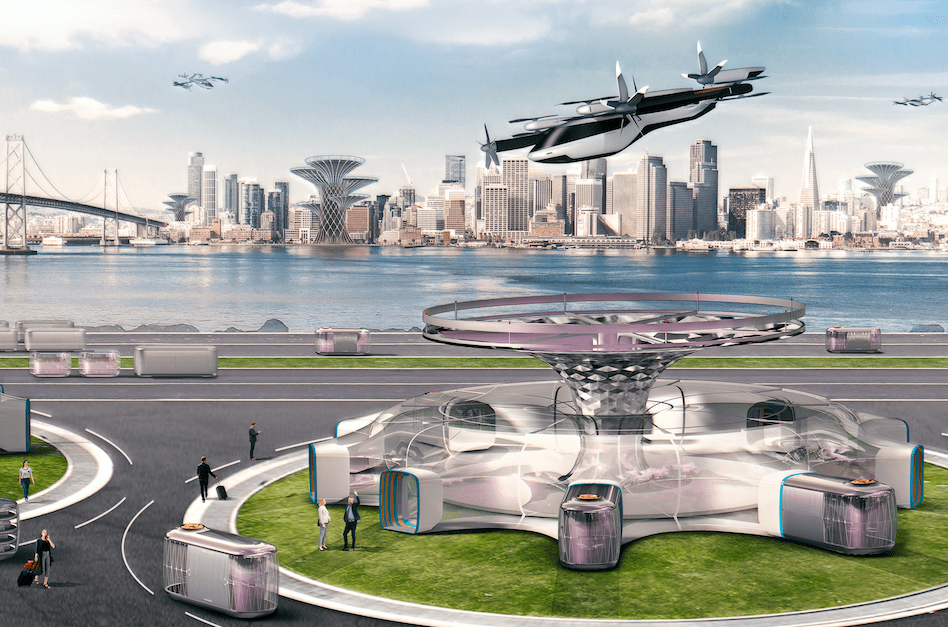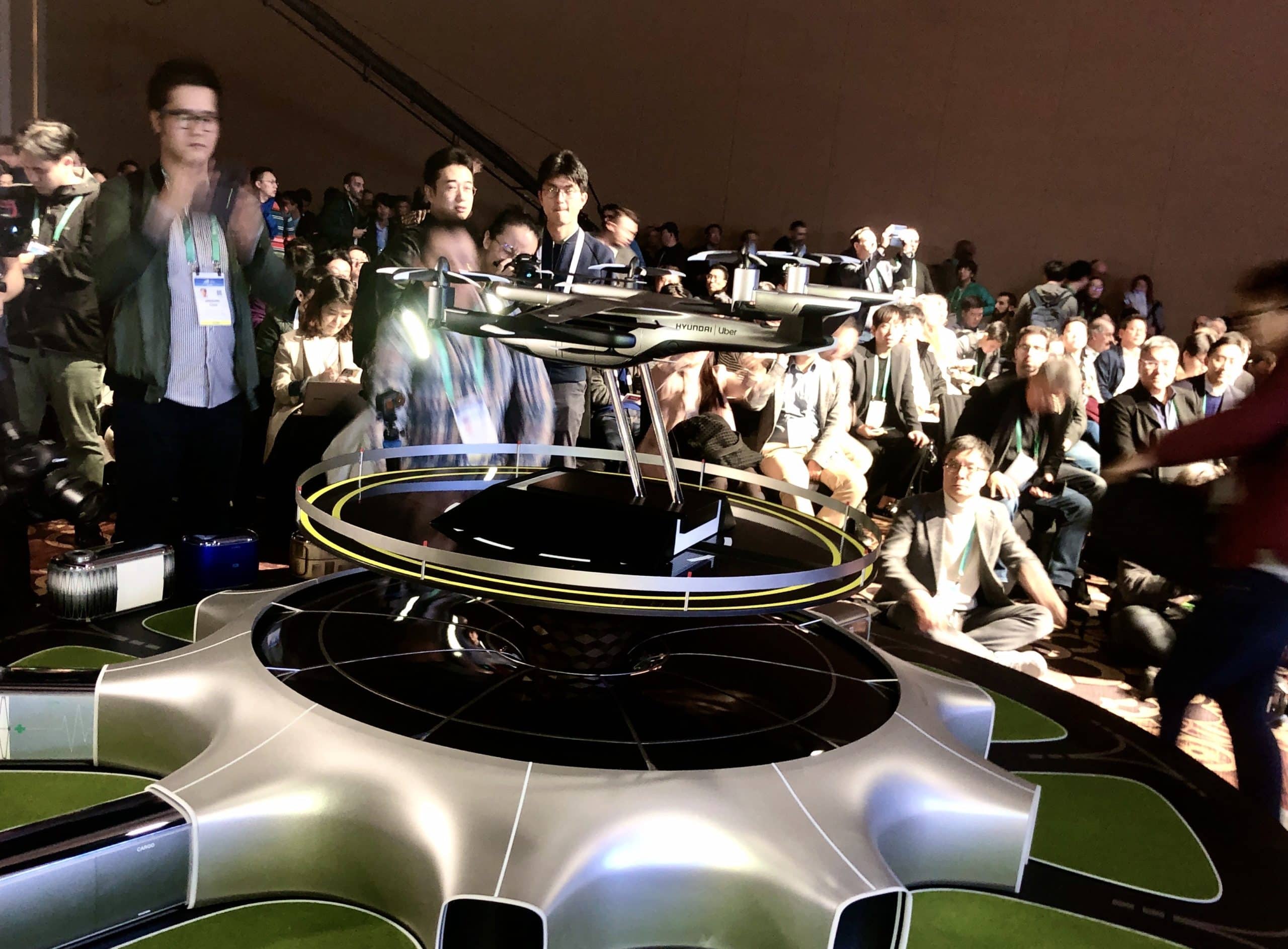Hyundai Reveals S-A1 Air Taxi Model at CES, Announces Uber Elevate Partnership
Share

Hyundai envisions an “era of liberalization from gridlock and democratization of flight” made possible by its S-A1 urban air mobility solution.
Hyundai announces #SA1 eVTOL, has partnered with @Uber Elevate with aim of launching by 2023 #CES2020 #CES #UAM #UrbanAirMobility #futuremobility @Hyundai @Hyundai_Global pic.twitter.com/Cu7S9AvMR3
— Kristina Velan (@kristinavelan) January 6, 2020
Hyundai showed off a mockup of its electric vertical takeoff and landing (eVTOL) vehicle during a packed press conference at the Consumer Electronics Show (CES) in Las Vegas today. The automotive manufacturer – turned smart mobility solutions provider – is the first Uber Elevate partner with capabilities to mass-produce air taxis, which could fly as early as 2023 according to Eric Allison, head of Uber Elevate.
“We believe Hyundai has the potential to build Uber Air vehicles at rates unseen in the current aerospace industry, producing high quality, reliable aircraft at high volumes to drive down passenger costs per trip,” Allison said.

In addition to being affordable, the S-A1 will be safe, quiet and passenger-centric, according to Youngcho Chi, chief innovation officer at Hyundai Motor Company. Multiple small rotors allow for redundancy in case any single one fails, and are also less noisy than larger versions. The cabin is configured with four seats, enabling efficient boarding and eliminating the middle seat. CES attendees will be able to experience the S-A1 via virtual reality at Hyundai’s booth this week.
RELATED: Uber Elevate Partner Bell Unveils Autonomous Air Taxi at CES
The fully electric S-A1, which takes just five to seven minutes to recharge, will be able to reach speeds of up to 180 miles per hour and fly distances up to 60 miles, at an altitude of 1000 to 2000 feet. Initially, it will be flown by a pilot, but will eventually become autonomous. Representatives from Bell and Uber Elevate outlined a similar plan – gradually eliminating the need for a pilot – during a panel earlier in the day. Bell, which is also partnering with Uber, unveiled its VTOL concept, the Bell Nexus, at CES last year.
The safest, best path for #UrbanAirMobility is to start with a pilot on board. But to unlock the true economical potential of the system, we’d have to get to that more autonomous state, says @BellFlight's Scott Drennam. @Uber Elevate's Wyatt Smith agrees #CES2020 #CES pic.twitter.com/3MzeWmTCsK
— Kristina Velan (@kristinavelan) January 6, 2020
Hyundai and Uber Elevate are collaborating on infrastructure concepts to support urban air mobility. Vertiport hubs will connect air-based eVTOL vehicles with ground-based vehicles that offer various services – doubling as restaurants or clinics, for example.
“We can reduce travel time drastically by working around [ground] traffic congestion. We’ll be able to fly on demand, rather than fitting our lives around an airline’s schedule,” Chi said. “I’d like to call this new era an era of liberalization from gridlock and democratization of flight.”


